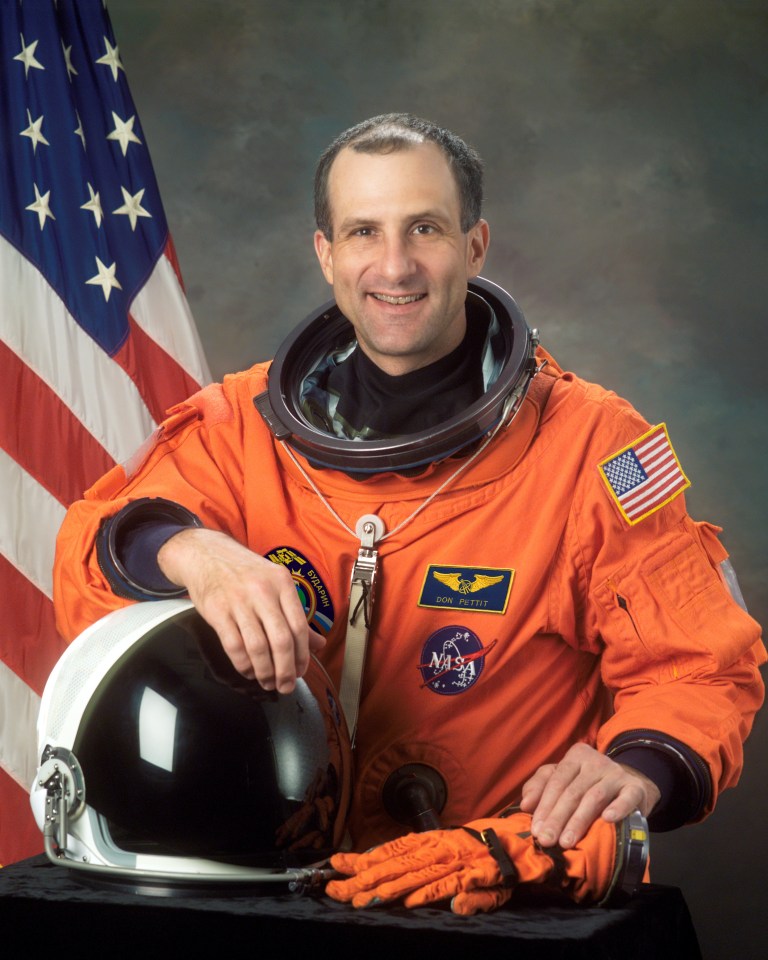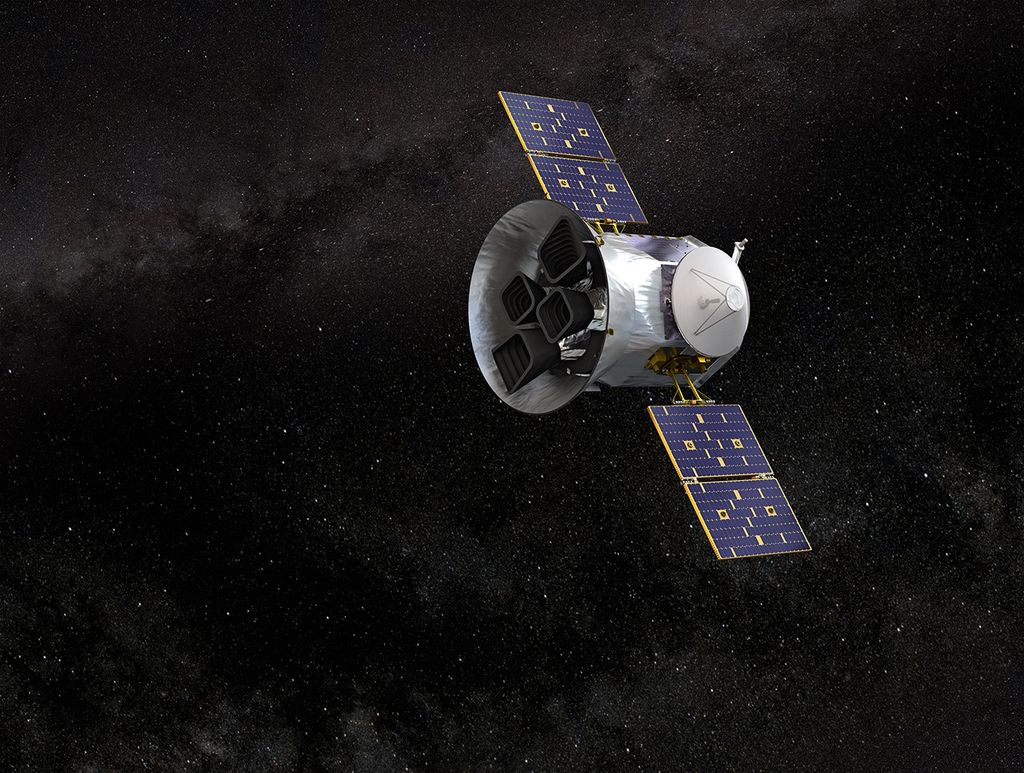
Donald R. Pettit
NASA Astronaut
Follow Donald
Summary
Donald R. Pettit (Ph.D.) was selected by NASA in 1996. The Silverton, Oregon native holds a Bachelor of Science in Chemical Engineering from Oregon State University and a Doctorate in Chemical Engineering from the University of Arizona. Prior to becoming an astronaut, he worked as a staff scientist at the Los Alamos National Laboratory, New Mexico. A veteran of four spaceflights, Pettit first served as NASA science officer for Expedition 6 in 2003. Next, he served as mission specialist and operated the robotic arm for STS-126 in 2008. He returned to International Space Station in 2012 for a long duration mission as a flight engineer for Expedition 30/31, where he lived aboard the ISS for 193 days. Most recently, Pettit launched to the ISS on September 11, 2024, as a flight engineer on the Soyuz MS-26 spacecraft. Pettit logged another seven months aboard the station, conducting science experiments and maintaining the space station. He has lived a total of 590 days in space and has 13 spacewalk hours.
Experience
Staff scientist at Los Alamos National Laboratory, Los Alamos, New Mexico from 1984 to 1996. Projects included reduced gravity fluid flow and materials processing experiments onboard the NASA KC-135 airplane, atmospheric spectroscopy on noctilucent clouds seeded from sounding rockets, fumarole gas sampling from volcanoes and problems in detonation physics. He was a member of the Synthesis Group, a presidential commission lead by Lt. Gen. (Ret.) Tom Stafford tasked with assembling the technology to return to the Moon and explore Mars (1990) and the Space Station Freedom Redesign Team (1993).
NASA Experience
Selected by NASA to be an astronaut in April 1996, Dr. Pettit reported to the Johnson Space Center in August 1996. A veteran of four spaceflights, Dr. Pettit has logged 590 days in space and 13 spacewalk hours. He lived aboard the International Space Station for 5 1/2 months during Expedition 6, was a member of the STS-126 crew, and again lived aboard the station for 6 1/2 months as part of the Expedition 30/31 crew.
Pettit spent seven months aboard the station as a flight engineer for Expeditions 71 and 72, conducting science experiments and maintaining the space station. Spanning 220 days in space, Pettit and his crewmates orbited the Earth 3,520 times, completing a journey of 93.3 million miles. He returned to Earth on April 19, 2025.
Spaceflight Experience
Expedition 6 (November 23, 2002 to May 3, 2003). Dr. Pettit completed his first spaceflight as NASA Science Officer aboard the International Space Station with Mission Commander Ken Bowersox, and Flight Engineer Nikolai Budarin, logging more than 161 days in space. During their mission, the crew performed science experiments while continuing space station construction. Dr. Pettit and Ken Bowersox performed two spacewalks. The Expedition 6 crew launched on STS-113 Space Shuttle Endeavour expecting to return on STS-114 Space Shuttle Discovery after a 2 1/2-month mission. Following the Columbia Space Shuttle disaster that grounded the Space Shuttle fleet, they returned to Earth after 5 1/2 months on Soyuz TMA-1, landing in Kazakhstan with a malfunction-caused ballistic entry. This off-nominal entry resulted in the landing 475 kilometers off course and taking about half a day before recovered by ground rescue teams.
STS-126 (November 14 to November 30, 2008). The Space Shuttle Endeavour launched from the Kennedy Space Center, Florida, and due to bad weather, returned to land at Edwards Air Force Base, California. The 16-day mission included expanding the living quarters of the International Space Station and a regenerative life support system that reclaims potable water from urine. During the mission, Dr. Pettit operated the robotic arm for four spacewalks.
Expedition 30/31 (December 21, 2011 to July 1, 2012). Pettit launched to the International Space Station aboard the Soyuz TMA-03M spacecraft from Kazakhstan. Don Pettit, Russian Soyuz Commander Oleg Kononenko and European Space Agency Flight Engineer Andre Kuipers of the Netherlands docked to the station on December 23, 2011. Dr. Pettit conducted scientific research, repair of ISS systems, and captured the first commercial cargo spacecraft, the SpaceX Dragon D1 using the robotic arm. They landed in Kazakhstan after 193 days in space.
Expedition 71/72: Most recently, Pettit launched to the International Space Station on September 11, 2024, as a flight engineer on the Soyuz MS-26 spacecraft. During his time aboard the space station, Pettit conducted research to enhance in-orbit metal 3D printing capabilities, advance water sanitization technologies, explore plant growth under varying water conditions, and investigate fire behavior in microgravity, all contributing to future space missions. He also used his surroundings aboard station to conduct unique experiments in his spare time and captivate the public with his photography. This was Pettit’s fourth spaceflight. He has logged 590 days in orbit throughout his career.
Pronunciation
DON-uld PET-it




























